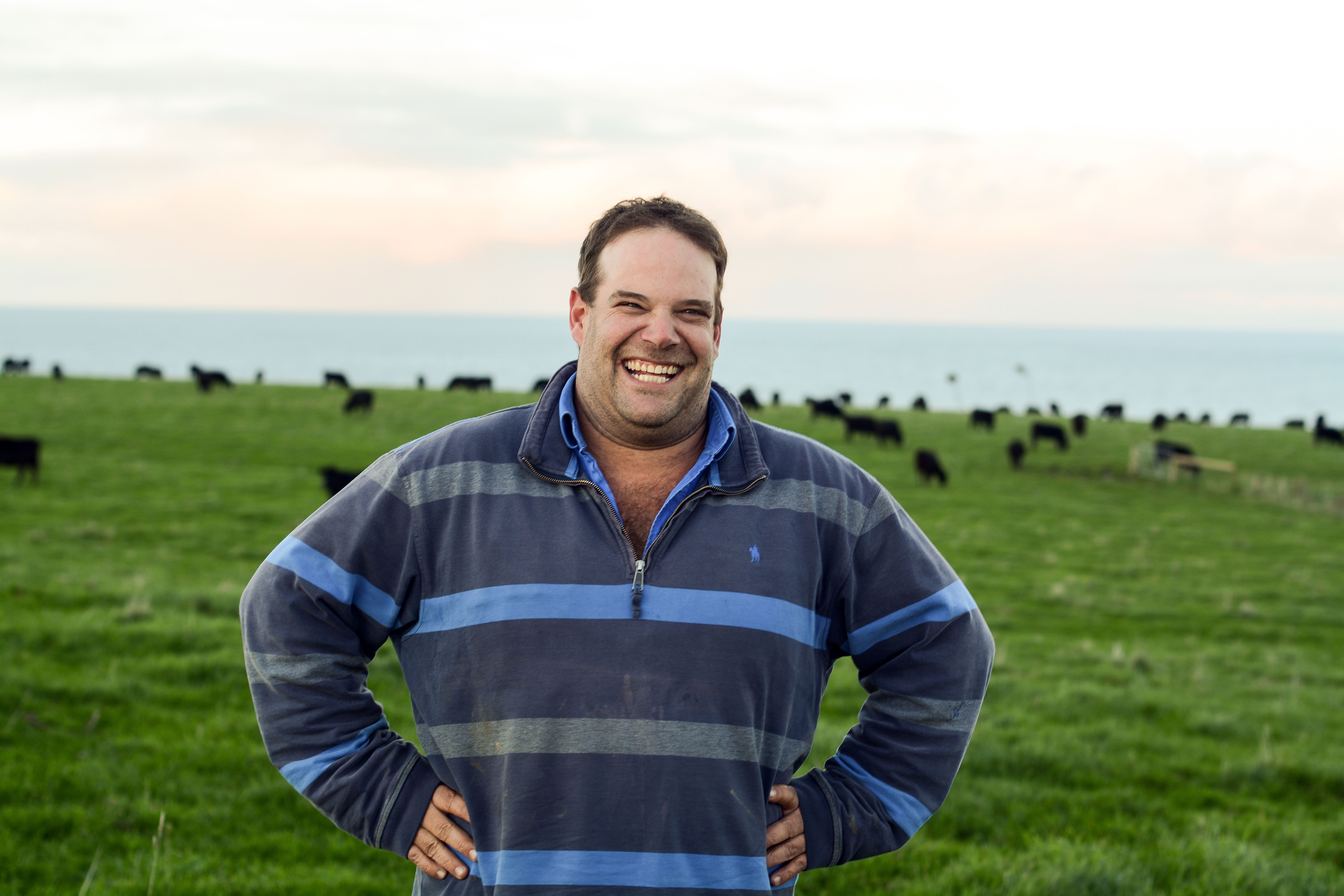Planning for growth

Theme: Economic resilience
Priority: Profitability across value chain
Business: Waverley Station, King Island
Location: King Island
"I believe the more you invest in your staff, the more they give back."
KEY POINTS
- Assessing profit drivers showed that production systems could be better matched to the environment
- The Pasture Principles program informed how grass was managed to match animal nutrition requirements to feed supply
- Strategies were implemented to increase labour efficiency
Waverley Station’s King Island operations manager Jamie Roebuck oversees 10,000ha, 8,000 Angus breeders and 12 staff across four farms on King Island for the family-run company, which also has properties in NSW.
His business plan is founded on three principles:
- Focus on the ‘low-hanging fruit’ of soil fertility and grazing management
- Invest heavily in staff training
- Match production systems to pasture supply
According to Jamie, “if you start with the basics and get the profit drivers right, the rest will start to fall into place.”
Jamie and his team focus on being flexible and responsive. A 2018 decision to turn stock off earlier and lighter was motivated by knowledge gained from the MLA-supported Pasture Principles program and supported by business analysis conducted with John Francis of Holmes and Sackett.
“Analysing our business and assessing profit drivers showed us we could better match our production systems to our environment by turning stock off earlier to relieve grazing pressure through winter and increase kilos of beef produced per hectare annually,” said Jamie.
“The Pasture Principles program completely changed how we manage our grass to match animal nutrition requirements to feed supply.”
Pasture management
Soil and rainfall vary across King Island, from lighter breeding country with 850mm rainfall in the north to heavier finishing country with 1,000mm rainfall in the south.
Stocking rates range from 22 DSE/ha for breeders to 18 DSE/ha for young cattle.
Pasture management changes included increasing mob size to extend the grazing rotation from 30 to 60 days during winter, giving ryegrass-clover pastures more time to rest and recover (rotation length decreases as it warms up to match rotation periods to leaf emergence rates).
Jamie hopes the amended grazing management will support 15-20% more breeders.
Productivity boosts
Grazing management is supported by an autumn nitrogen-based fertiliser program to build the winter feed wedge. This is supplemented by strategic urea application to bridge feed deficits, whilst extensive soil testing helps manage applications.
Investing in people
A labour-intensive enterprise and the challenge of attracting and retaining skilled staff in a remote rural community means people are just as important as pastures.
“No business can be sustainable without profit, and at our scale it’s not possible without people,” Jamie said.
“My biggest driver is profit and my biggest consideration in achieving that is the impact on the team. I believe the more you invest in your staff, the more they give back. I enrolled all our staff on the island in the Pasture Principles program, and by having everyone ‘on board’ its been easier to implement the changes to our grazing.”
Strategies to increase labour efficiency include simple repeatable systems, technologies such as farm-management software and electronic data collection, and infrastructure such as laneways and well-designed yards.
The joining and heifer management strategy has been adapted to a strict six-week joining period, but calving spread over eight weeks, as heifers are joined two weeks earlier than cows to give first-calf breeders time to get back into calf the following year.
*A longer version of this story was first produced in Feedback Magazine.
Categories: Economic resilience